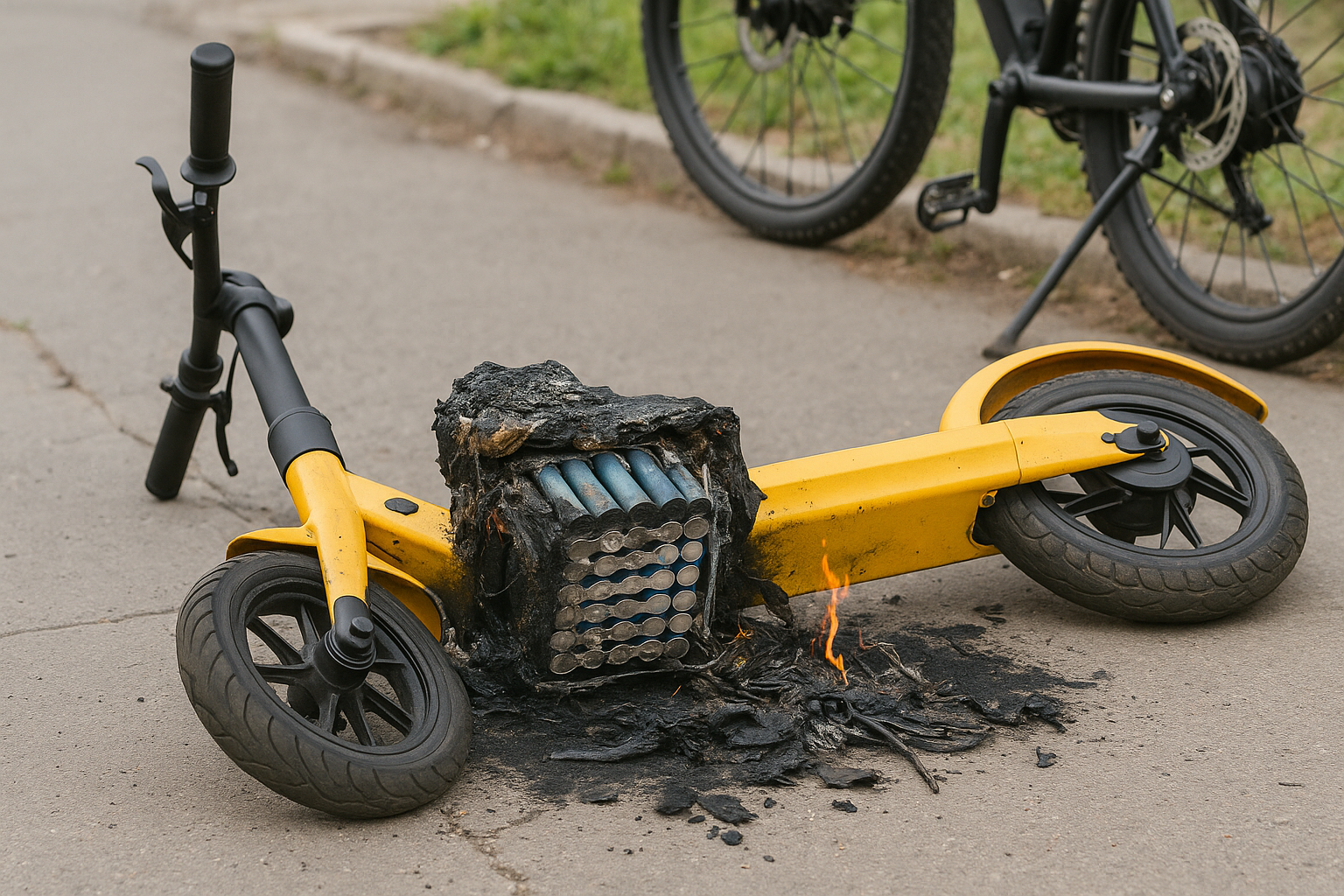E‑Bike and E‑Scooter Lithium Battery Explosions – Product Liability and Consumer Danger
E-bikes and e-scooters are everywhere — from city streets to delivery fleets to suburban garages. But behind the convenience lies a growing legal risk: lithium-ion battery fires. These devices have sparked lawsuits across the country, including in Washington, where injured riders and homeowners are beginning to hold manufacturers accountable for fires, burns, and property damage caused by defective or poorly made batteries.
What happens when your mode of transportation becomes a fire hazard? Lithium-ion batteries can overheat, explode, or ignite when they’re overcharged, punctured, exposed to high temperatures, or manufactured with internal defects. For some, the danger doesn’t appear until the scooter is parked inside a home, or the battery is charging silently in a garage.
The central legal issue is product liability. Were the batteries properly tested? Did the manufacturer issue appropriate warnings? Was the charger included with the device UL-certified? These questions determine whether a manufacturer or retailer is responsible for injuries caused by thermal runaway — the chemical reaction that can trigger an explosion or fire in faulty batteries.
Is the manufacturer always liable? Not always — but in many cases, they are. If a battery was defectively designed, poorly assembled, or lacked safety mechanisms, that’s grounds for strict liability. Retailers may also be responsible if they failed to warn customers, sold devices without proper certifications, or ignored safety recalls. In some cases, victims may also have claims against importers or shipping companies, especially when the product was sourced from overseas and sold in the U.S. market.
Do riders have any responsibility? Riders may be accused of misusing the device, overcharging the battery, or exposing it to moisture. But most e-bike and scooter owners use these devices exactly as intended. When something explodes during routine use — or while charging overnight — the courts often side with consumers, especially when no clear warning was provided.
What evidence helps in a battery fire case? Photos of the damaged device, the charging area, and any remaining packaging can be critical. So can surveillance video, receipts, and the device’s instruction manual. In many cases, the battery itself is sent to a forensic lab for testing. Attorneys often bring in battery experts or electrical engineers to reconstruct what went wrong and why.
Why does this matter to homeowners and tenants? E-bike battery fires can cause serious structural damage. If your insurance claim is denied or underpaid, a product liability claim may be your best path to full compensation — not just for physical injuries, but for property loss, temporary relocation, and emotional trauma.
As micromobility devices grow in popularity, the need for legal accountability grows with them. Cities may adopt stricter regulations. But for now, the burden often falls on individual consumers to fight back after an injury — and make sure dangerous products are pulled from the market before someone else gets hurt.


